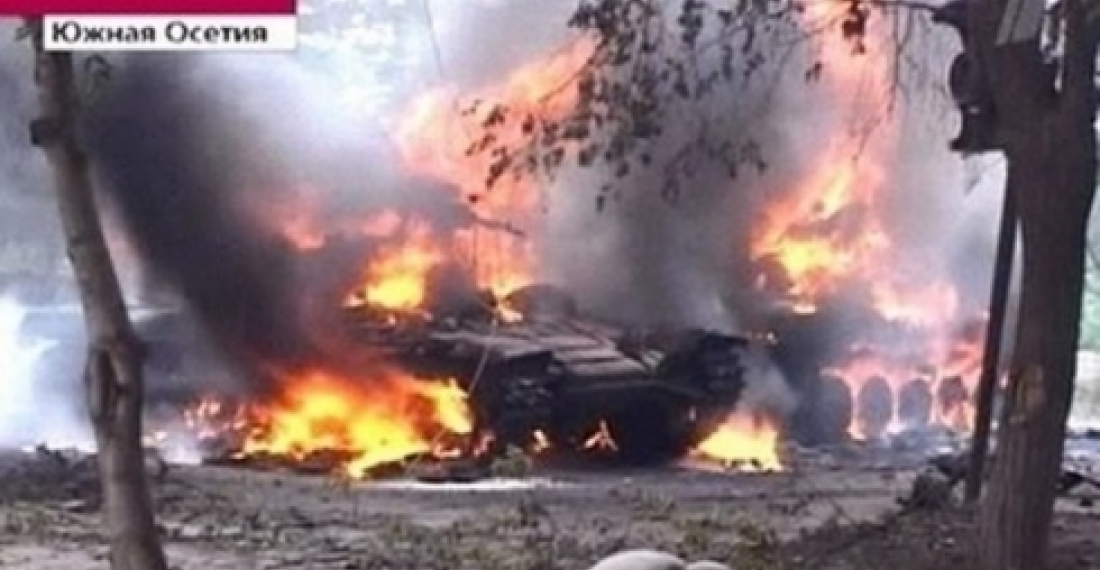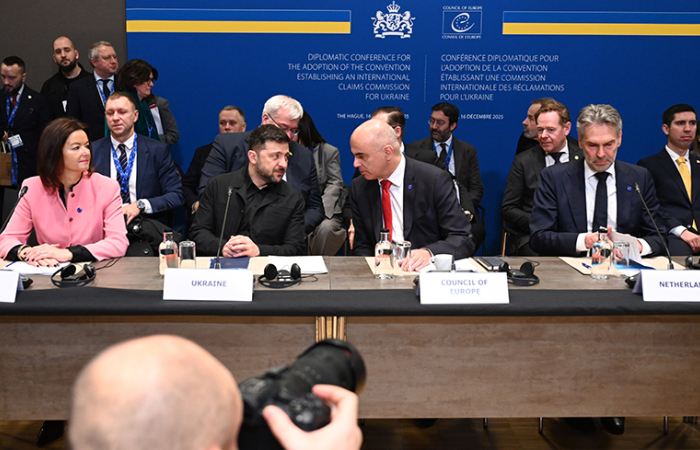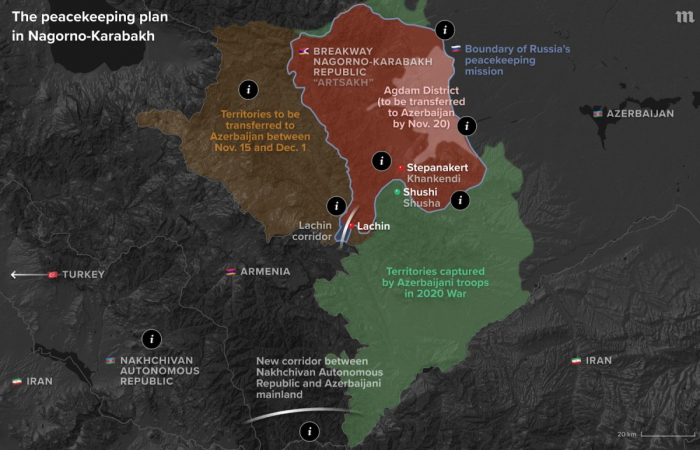Five years have passed since August 2008, when Georgia and Russia fought a short but costly war that once more brought suffering and death on a huge scale to people of the Caucasus Region. Lessons need to be learnt from this tragic event and the world and the people of the region together must say "Never again", and must with their actions and their will avoid the spiral that leads to war. Commonspace.eu summarises the conflict and its background in ten short questions and answers, as an introduction to a series of articles, interviews and special reports which we will be publishing over the next few days
10 Questions about the August 2008 Georgia-Russia War
1. What happened?
For several days, in August 2008, Georgia and Russia fought a brief war that left many dead or injured, and many others displaced. The figures for those killed in the war vary from 850 to several thousand. Initial reports that 10,000 people were killed in the first day of the war turned out to be grossly exaggerated.
2. What is the history of the conflict?
The regions of Abkhazia and South Ossetia have historically had distinct cultures and languages from the rest of Georgia, and were granted different degrees of autonomy within the Georgian Soviet Socialist Republic. When the USSR broke up in 1991 nationalist sentiment reared its head both in Tbilisi and in the autonomous regions. The Abkhaz and the Ossetians sought the support of Russia in their conflict with the Georgians. After several years of conflict an uneasy peace was established in the two conflict regions. Russia deployed peacekeeping missions, one in Abkhazia which had a CIS mandate, and one in South Ossetia which was the result of a bilateral agreement with Georgia. The international community was also represented. The UN had a mission focused on Abkhazia - UNOMIG, and the OSCE on South Ossetia. The Russian peacekeepers were armed, but the international missions were unarmed. Attempts to find a peaceful solution to the conflicts failed despite various attempts, and Abkhazia and South Ossetia existed de facto within a political limbo, without any international recognition. On assuming power in 2003 Mikheil Saakashvili vowed to restore Georgia's ‘territorial integrity' by returning South Ossetia and Abkhazia to Tbilisi's control. Georgia tried to tighten the noose around the two separatist territories but this only resulted in increased Russian support for them.
3. Why did tensions increase leading up to August 2008?
Success in restoring control over Adjara in the west of Georgia, and a much improved economy, hardened Tbilisi's resolve. Saakashvili greatly increased military spending and made clear his pro-Western inclinations by attempting to join NATO. On the other hand Russia's domestic politics stabilised, and it began to become more concerned with its own ‘sphere of influence' and with Georgia's pro western orientation. Russia began granting passports to Abkazh and Ossetian citizens, and increased its financial and economic support to the separatist regions, much to Tbilisi's irritation.
4. How did fighting break out?
Tensions on the Abkhazian border increased greatly from April 2008. Georgian unmanned aerial vehicles (UAVs) were shot down, and bombings occurred on both sides. These skirmishes had shifted to South Ossetia by July. By August, both sides started evacuating civilians from the conflict region. There were also reports that both sides engaged mercenaries to prop up their own forces.
5. Who started it?
Russia's behaviour leading up to August 7th has been deemed to have been provocative and certainly not what was to be expected from a country that presented itself as a mediator and provided the peace keeping forces. However, as the meticulous EU supported fact-finding mission headed by Swiss diplomat Heidi Tagilavini makes clear, by shelling the South Ossetian capital Tskhinvali on the night of August 7th Saakashvili's Georgian forces triggered all out war in the Caucasus.
6. What was the ‘Battle of Tskhinvali'?
Late at night on 7 August, Georgian forces began to shell Tskhinvali in an attempt to retake it. Ground forces moved in early on the morning of August 8th. The head of the Georgian Army appeared on television around the same time saying that this was an operation aimed at restoring the constitutional order. Prime Minister Putin who was in Beijing for the opening of the Olympic Games cut short his visit and flew directly to the North Ossetian Capital Vladikafkaz. Within hours, Russian air and ground troops joined the Ossetian militia, halting the Georgian advance. Georgia unilaterally called a ceasefire on August 10th.
7. How did Russia react?
The Tagliavini report notes ‘much of the Russian military action went far beyond military defence'. Not content with simply banishing Georgian troops from South Ossetia, Russian forces pushed deep into Georgian territory. Russia engaged Georgia in naval skirmishes in the Black Sea, as well as occupying major settlements such as parts of Zugdidi in Western Georgia, and Gori, very close to Tbilisi. For a short time Russian forces were on the road that connects east and west Georgia, practically cutting the country in two. Russian and Abkhazian troops also opened a new front by attacking Georgian positions in the Upper Kodori Valley. It became clear that the Russians were not simply repulsing a Georgian attack but were expelling the Georgian forces from all the territories that had, during the time of the USSR, been part of the Abkhaz Autonomous Republic and the South Ossetian Autonomous Region - even those parts that had always remained under the control of Tbilisi after 1991.
8. Why did fighting stop?
France at that time held the rotating presidency of the EU, and the French president Nicolas Sarkozy, after several days of shuttle diplomacy between Tbilisi and Moscow, brokered a six-point ceasefire agreement on 12th August, and it was signed by both parties on the 16th. The agreement has, by and large been honoured, however Russia has failed to abide to point five under which it was obliged to return its troops to pre-conflict positions.
9. What atrocities, if any, were committed?
The Georgian shelling of Tskhinvali, which resulted in many deaths, was illegal, and neither necessary nor proportional. The Tagliavini report describes this ‘massive Georgian artillery attack' as ‘indiscriminate'. In addition, the Russian military response ‘cannot be regarded as even remotely commensurate with the threat to Russian peacekeepers in South Ossetia'. There is clear evidence that forced displacement, lootings and assaults took place in Georgian populated villages in South Ossetia. The villages have now been completely burnt down.
10. What has happened since the fighting stopped?
Russia recognised Abkhazia and South Ossetia as independent on August 26th 2008. At the moment only Nicaragua, Venezuela, Nauru and Tuvalu have joined Russia in recognising the territories as independent. However Russian troops are more embedded than ever in South Ossetia and Abkhazia, and Russia has signed long term defence agreements with the authorities of the two entities allowing it to station large numbers of troops on their territories. Both borders are closed to Georgian nationals. Georgia broke off diplomatic relations with Russia and withdrew its membership of the Commonwealth of Independent States (CIS) shortly after the conflict and the subsequent Russian recognition.
The European Monitoring Mission in Georgia was established weeks after the conflict to introduce an independent and neutral international presence. Minor skirmishes have taken place, especially in the immediate aftermath of the war. The ‘Geneva Process', which attempts to find a diplomatic resolution to the dispute, has so far generated little in the way of results, however there have been no major clashes since August 2008.
source: 10 Questions and Answers on the August 2008 Georgia-Russia War was compiled by the staff of commonspace.eu from publicly available reports and coverage
photo: screen shot of a burning tank in the centre of Tskhnivali on 8 August 2008
Related articles on commonspace.eu
Interview with Dimitri Medoev, South Ossetia's envoy in Moscow (published on 7 August 2013)






